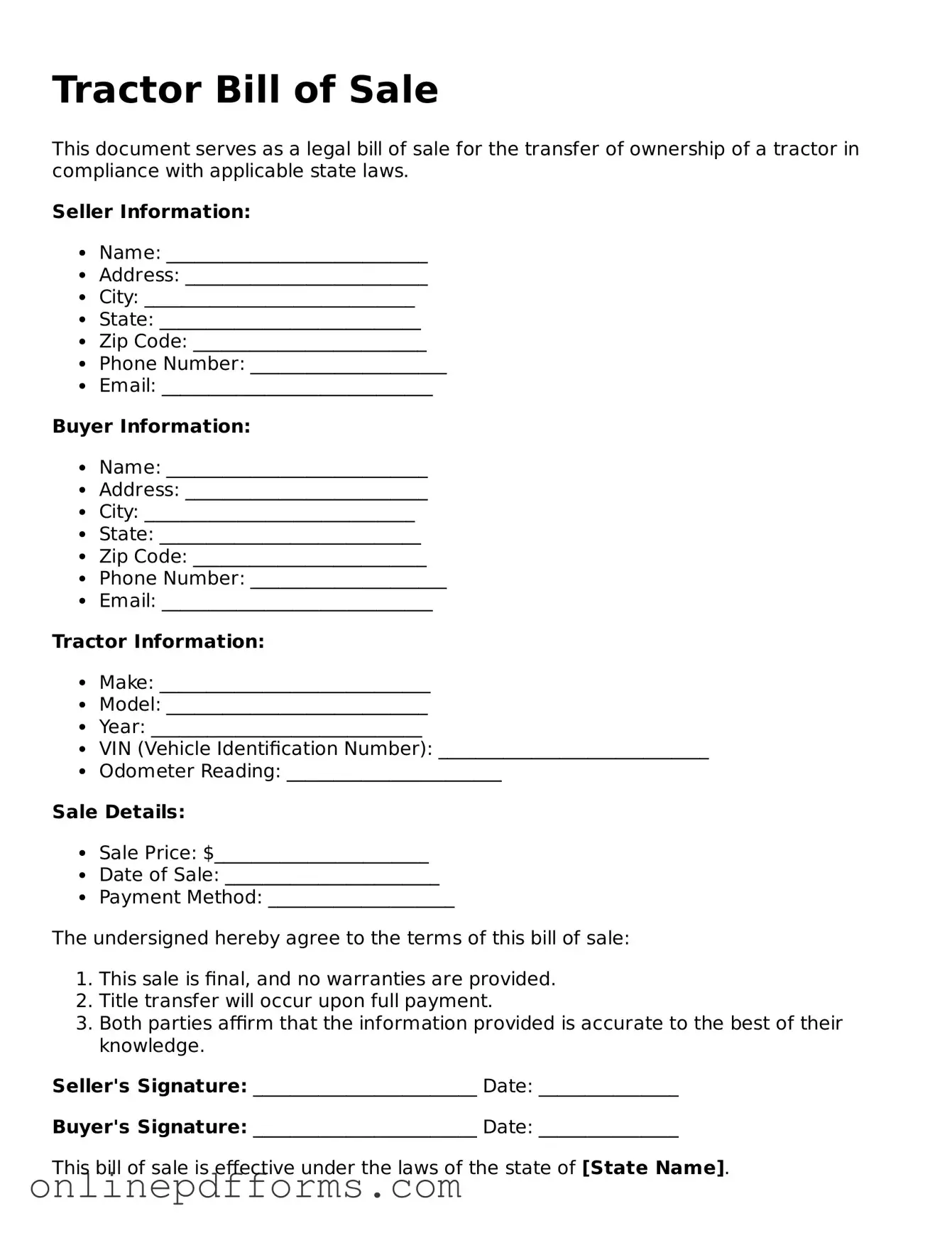Legal Tractor Bill of Sale Form
A Tractor Bill of Sale form is a legal document that records the transfer of ownership of a tractor from one party to another. This form serves as proof of the transaction and outlines important details such as the sale price, date of sale, and information about both the buyer and seller. To ensure a smooth transfer, consider filling out the form by clicking the button below.
Open Tractor Bill of Sale Editor Now
